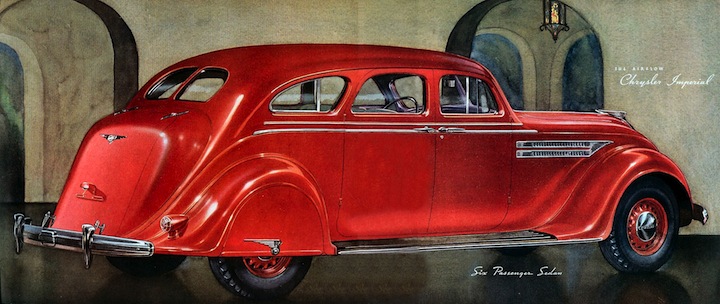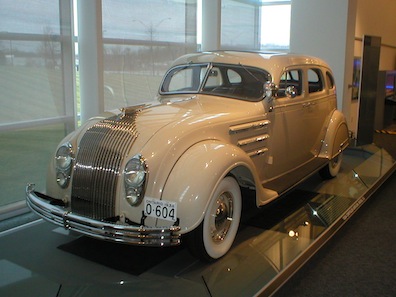Chrysler's revolutionary Airflow vehicle explained in a 1934 film

(June 30, 2014) Chrysler was the first American automaker to streamline a vehicle when it introduced the Chrysler Airflow in 1934. Led by Chrysler engineer Carl Breer, the company sought to build a car that was less susceptible to air resistance to get more performance from the engine and increase gas mileage.
A strange-looking — although aerodynamic — car for the times, it was designed with the help of wind tunnel tests and with the cooperation of famed airplane inventor Orville Wright. By 1930, Chrysler engineers had performed tests on more than 50 scale models.
 The car was built using monocoque (unibody) construction, unheard of in those times. it served to both strengthen the vehicle while reducing its overall drag increasing the power-do-drag ratio. The streamlined design allowed air to flow around it instead of being caught through upright forms such as radiator grilles, headlights and windshields.
The car was built using monocoque (unibody) construction, unheard of in those times. it served to both strengthen the vehicle while reducing its overall drag increasing the power-do-drag ratio. The streamlined design allowed air to flow around it instead of being caught through upright forms such as radiator grilles, headlights and windshields.
The car was introduced in January 1934 with production peaking at 6,212 units in May 1934. Initial quality problems due to the difficulties encountered on the assembly line helped sink the project. The car was built as a Chrysler and later as a DeSoto through 1937 when the project was dropped.
Airflow production reached 10,839 in 1934, but fell off to 7,751 in 1935 and 6,275 in 1936. Only 4,603 were sold in its final year in 1937.
Chrysler produced a very interesting 13-minute advertising film "Fashioned by Function" at the outset of Airflow production. It is incredibly information — and enjoyable.
For more information visit Wikipedia
